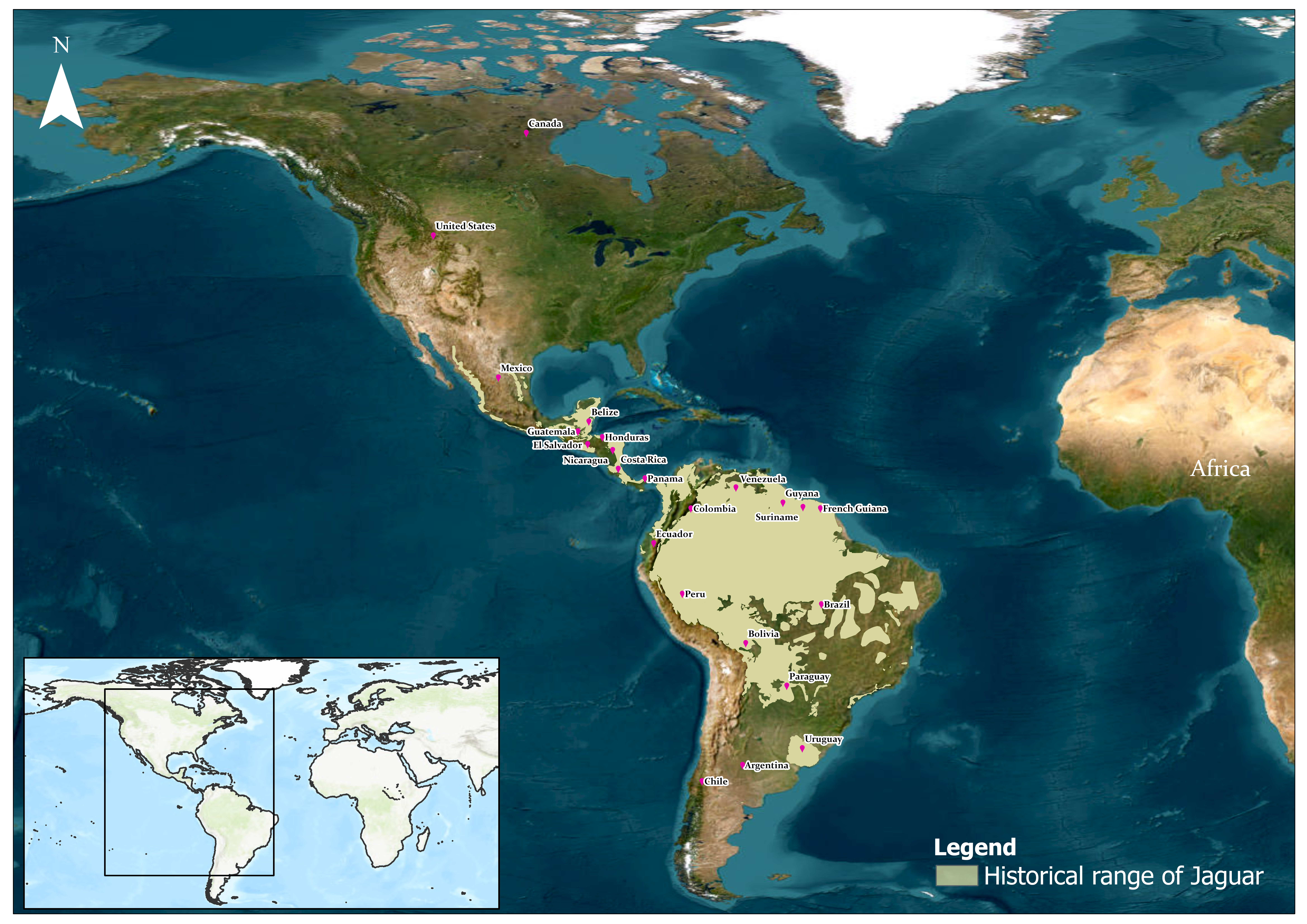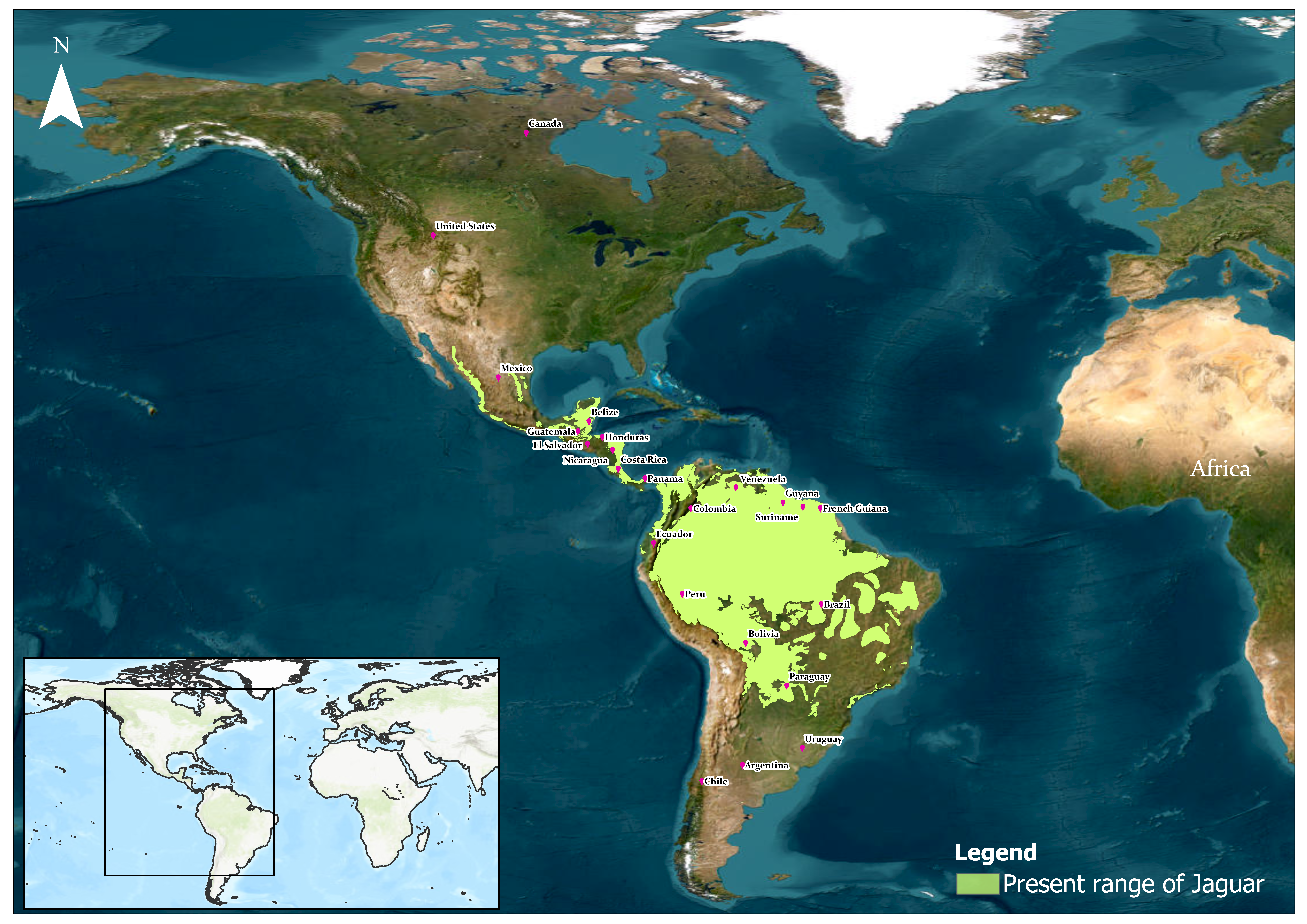JAGUAR
Phylum: Chordata
Class: Mammalia
Order: Carnivora
Family: Felidae
Genus and Species: Panthera onca
Jaguars are the largest big cats native to the Americas and recognized for their strong build and distinctive coat pattern. The word ‘jaguar’ probably originates from yaguara, a Tupí-Guaraní word of South America meaning “true, fierce beast who kills with one leap.” They are the largest cats in the Americas and the third-largest globally, following tigers and lions.
 (1).jpg)
Historically, up to 9 sub-species of jaguars have been recognized. It is still distinguished from two extinct fossil subspecies, Panthera onca augusta and Panthera onca mesembrina. This classification reflects the genetic and morphological research indicating north-south variation among populations but not enough evidence for subspecific differentiation. The latest Felidae taxonomy revision in 2017 proposed that the jaguar is a monotypic species (with no sub-species).
Analyses of mt-DNA suggested origin of jaguars in northern South America approximately 280,000 – 510,000 years ago. The ancestors of the modern jaguar likely entered the Americas from Eurasia during the Early Pleistocene via the land bridge that once spanned the Bering Strait. Morphological and genetic research has shown that jaguars share several features with leopards (P. pardus), leading to the inference that they are closely related. Genetic analyses also suggest a significant gene flow among jaguar populations in the past, particularly in Colombia.
Head and body length, without the tail, may be up to six feet (1.85m), and the tail can measure 30 inches (75cm) more. Height at the shoulder may be up to 30 inches (75cm). Male jaguars are larger than females. The weight varies 100 to 160 kg. South American jaguars are larger than those of Central America and the largest jaguars have been recorded from the Brazilian Pantanal region.
The jaguar’s coat color ranges from pale yellow to reddish brown, with a much paler (often white) underbelly and with black spots arranged in rosettes with a black spot in the center. The jaguar resembles the leopard of Africa and Asia, but the leopard lacks the black center spot. Along the midline of the jaguar’s back is a row of long black spots that may merge into a stripe.
With an estimated world population of 173,000, jaguars can be found in 18 countries.
The jaguar's historic range, around the turn of the 20th century, was estimated at 19 million square kilometres, stretching from the southern United States to southern Argentina. By the 21st century, this range had decreased significantly to about 8.75 million square kilometres, with notable declines in the southern United States, northern Mexico, northern Brazil, and southern Argentina.
Jaguars have a wide range in the Western Hemisphere, extending from the southwestern United States across Mexico and much of Central America to South America, as far south as Paraguay and northern Argentina. Brazil holds around half of the wild jaguars in the world with approximately 89% of the global population living in the Amazon River basin.
Habitat is variable for the species. It is found from lowland jungle to montane forest, at altitudes of up to 2,000m but is seen in wet grassland and arid scrub as well. Their preferred habitats include tropical and subtropical moist broadleaf forests, wetlands, and wooded regions. Jaguars are adept swimmers and often found living near water bodies like rivers, streams, lagoons, and swamps.
Females have an estrous cycle of approximately four weeks, and can breed at any time of year
Average gestation period: 93 to 105 days
Average litter size: 2 (up to 4 cubs)
Average lifespan: 13-14 years in the wild, up to 23 years in captivity
Jaguars have a land tenure system similar to tigers and cougars. Females home ranges vary in between 25 km² to 40 km². Ranges overlap somewhat, and resident males inhabit territories about twice that size, patrolling through the ranges of several females at a time. Basically solitary, they come together for breeding.


Its primary dietary sources are capybara and peccaries, but it also preys on fish, crocodilians, birds, snakes, tapirs, and several other small animals. The jaguar is known for killing the prey by crushing bites to the skull. Even though they are active throughout the day, jaguars mostly hunt on the ground at night.
IUCN has listed jaguars as Near Threatened as per the 2016 assessment of the Red Data Book.
Jaguars face several conservation threats that contribute to their declining populations in the wild. Some of the key threats include:
- Habitat loss and fragmentation
- Conflict with humans
- Illegal hunting
Jaguars are emblematic of the rich biodiversity of the Americas and are significant both ecologically and culturally. Their presence across a wide range of habitats underscores their adaptability and the importance of various ecosystems they inhabit. However, their decreasing range highlights the urgent need for conservation efforts to protect these majestic animals and their habitats.
